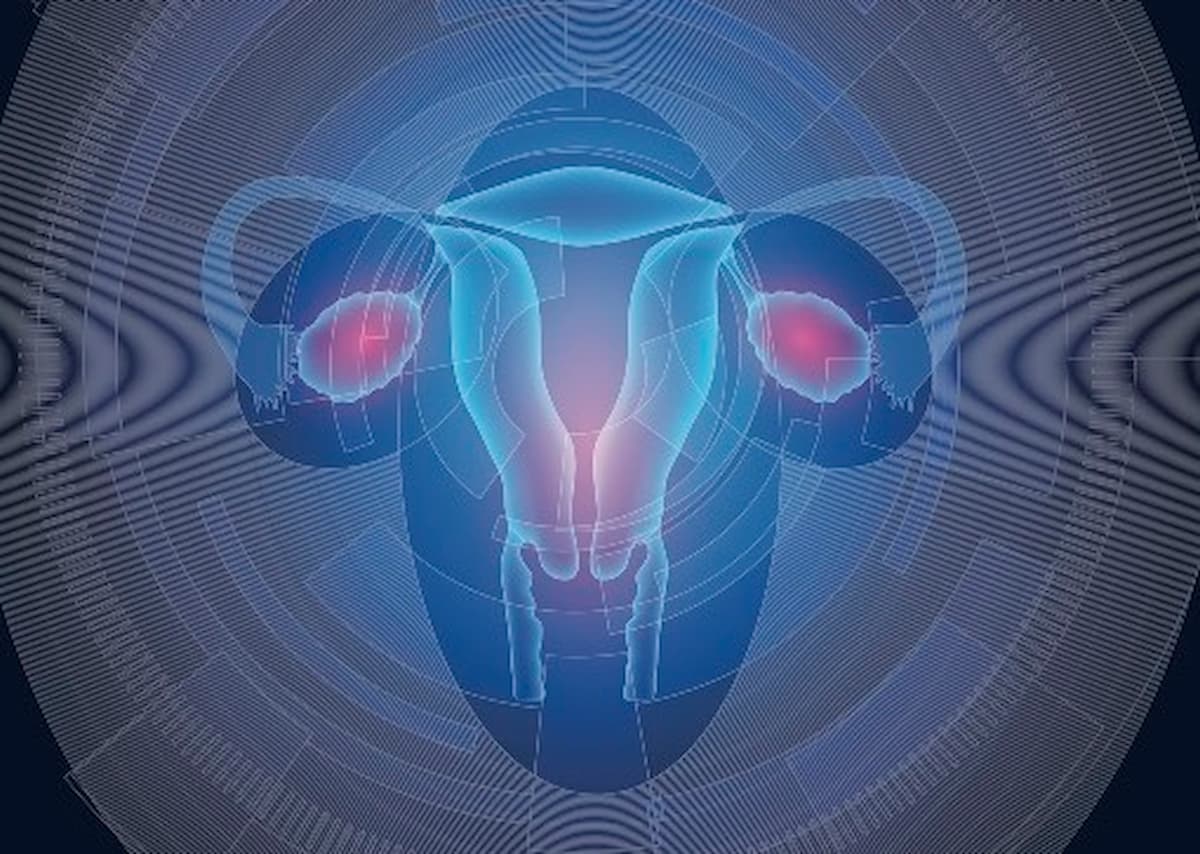Simultaneous Integrated Boost Radiotherapy Improves PFS in Cervical Cancer
Patients with full-thickness or outer full-thickness stromal invasion following surgery had improved PFS when treated with SIB radiotherapy.
Patients with full-thickness or outer full-thickness stromal invasion following surgery had improved PFS when treated with SIB radiotherapy.

Simultaneous integrated boost (SIB) radiotherapy improved progression-free survival (PFS) without increasing toxicity in patients with cervical cancer presenting with full-thickness or outer full-thickness stromal invasion in postoperative settings, according to data from a phase 3 trial (ChiCTR1900027272) published in JAMA Network.
With a median follow-up of 33 months (range, 8-54), the 3-year rate PFS was 84.6% with SIB radiotherapy compared with 76.8% with conventional radiotherapy (P = .04); a 35.7% reduction in the risk of progression was confirmed by Cox proportional hazards regression (HR, 0.64; 95% CI, 0.42-0.99; P = .04).
The pelvic-specific PFS rate was 94.6% in the SIB radiotherapy group vs 88.5% in the conventional group (P = .02), and the tumor bed boost local control rates were 97.6% vs 91.6%, respectively (P = .03).
No significant differences were observed for the following data points: 3-year overall survival (OS), with rates of 90.6% with SIB radiotherapy and 88.3% with conventional radiotherapy (P = .28); distant metastasis-free survival, with rates of 86.7% and 82.4%, respectively (P = .33); and cancer-specific survival, with rates of 91.7% and 88.7% (P = .15).
The SIB radiotherapy group also demonstrated a lower isolated locoregional recurrence rate compared with the conventional radiotherapy group, with rates of 2.1% and 6.9%, respectively (P = .01). No statistical difference was observed between either group concerning the incidence of concurrent locoregional recurrence and distant metastasis, with rates of 3.0% in the SIB radiotherapy group and 4.7% in the conventional radiotherapy group (P = .34).
After a multivariable Cox proportional hazards regression analysis addressed collinearity between International Federation of Gynecology and Obstetrics (FIGO) stage IIC2p and para-aortic nodal involvement, 3 independent risk factors for PFS and OS were identified: adenocarcinoma histology, tumor size of 4 cm or more, and lymphovascular space invasion (LVSI). A 41% reduction in the risk of recurrence was identified with SIB radiotherapy (HR for progression, 0.59; 95% CI, 0.38-0.91), which was consistent across subgroups.
Additionally, histologic subtype had a significant prognostic influence on PFS, as adenocarcinoma had doubled the risk of recurrence compared with squamous carcinoma, which had an equivalent risk of recurrence compared with adenosquamous carcinoma. Positive vaginal margins quadrupled the probability of recurrence (HR, 4.60; 95% CI, 1.97-10.73).
In a prespecified subgroup analysis, a PFS benefit was observed with SIB radiotherapy for patients with squamous cell carcinoma (HR, 0.57; 95% CI, 0.34-0.96; P = .03) and patients with LVSI (HR, 0.63; 95% CI, 0.40-0.98; P = .04); the absolute 3-year PFS improvements were 43% and 37%, respectively.
“In this randomized clinical trial of patients with cervical cancer presenting with [with full-thickness or outer full-thickness] stromal invasion after radical surgery, SIB radiotherapy established itself as an effective strategy for improving PFS and locoregional control,” wrote lead study author Suping Liu, MD, of the Department of Gynecologic Oncology at Fudan University Shanghai Cancer Center, in Shanghai, China, and coauthors. “The demonstrated clinical benefits, coupled with comparable profiles of toxic effects, strongly support integrating SIB radiotherapy into standard adjuvant therapy protocols for patients in this cohort.”
A total of 466 patients with pathologically confirmed full-thickness or outer full-thickness stromal invasion following radical hysterectomy were enrolled in the trial and randomly assigned, in a 1:1 ratio, to receive either SIB radiotherapy (n = 233) or conventional radiotherapy (n = 233). Those with parametrial involvement were excluded from enrollment.
Treatment in the SIB radiotherapy group was pelvic intensity-modulated radiotherapy (IMRT) at 50.4 Gy in 28 fractions with cisplatin administered at 40 mg/m2 weekly, supplemented by SIB radiotherapy to the tumor bed at 58.8 Gy in 28 fractions. The target volume of SIB radiotherapy was extended 2 cm superior to the femoral head and 2 cm inferior from the top of the vagina, including the bladder posterior wall anteriorly, the sacral ligament complex posteriorly, and the obturator internus and pubococcygeus muscles laterally. In the conventional radiotherapy group, patients received the same pelvic IMRT and cisplatin regimen. Those with positive vaginal margines received a high dose-rate intracavitary brachytherapy via a vaginal ovoid applicator at 12 Gy in 2 fractions.
The primary end point of the trial was 3-year PFS. Secondary end points included 3-year OS, locoregional recurrence, distant metastasis, tumor bed boost local control, and treatment-related adverse effects (AEs).
An analysis of postrelapse survival revealed that patients who received immunotherapy had significantly prolonged survival vs those who received nonimmunotherapy regimens, with median postrelapse survivals of 19 months (IQR, 12-26) and 10 months (IQR, 7-18), respectively (P = .001); a similar effect was observed for salvage radiotherapy (P = .03).
Grade 3 to 4 hematologic AEs were predominant during treatment, being experienced by 7.3% of the SIB radiotherapy group and 5.2% of the conventional radiotherapy group (P = .13). Notable critical complications were acute incomplete bowel obstruction and late obstructions, with 2 cases requiring enterostomy; grade 3 limb edema occurred in 9 patients, including 3 in the SIB radiotherapy group and 6 in the conventional group. No treatment-related deaths occurred among the patients enrolled in the trial.
Reference
Liu S, Fang C, Wu X, Zhu J, Ke G. Chemoradiotherapy with or without simultaneous integrated boost for cervical cancer with full-thickness stromal invasion: A phase 3 randomized clinical trial. JAMA Netw Open. 2025;8(9):e2532501. Published September 2, 2025. doi:10.1001/jamanetworkopen.2025.32501
Elevating the Quality of Cancer Care via Cross-Department Collaboration
Experts from Sibley Memorial Hospital discuss how multidisciplinary work has enhanced outcomes such as survival and resource use at their institution.